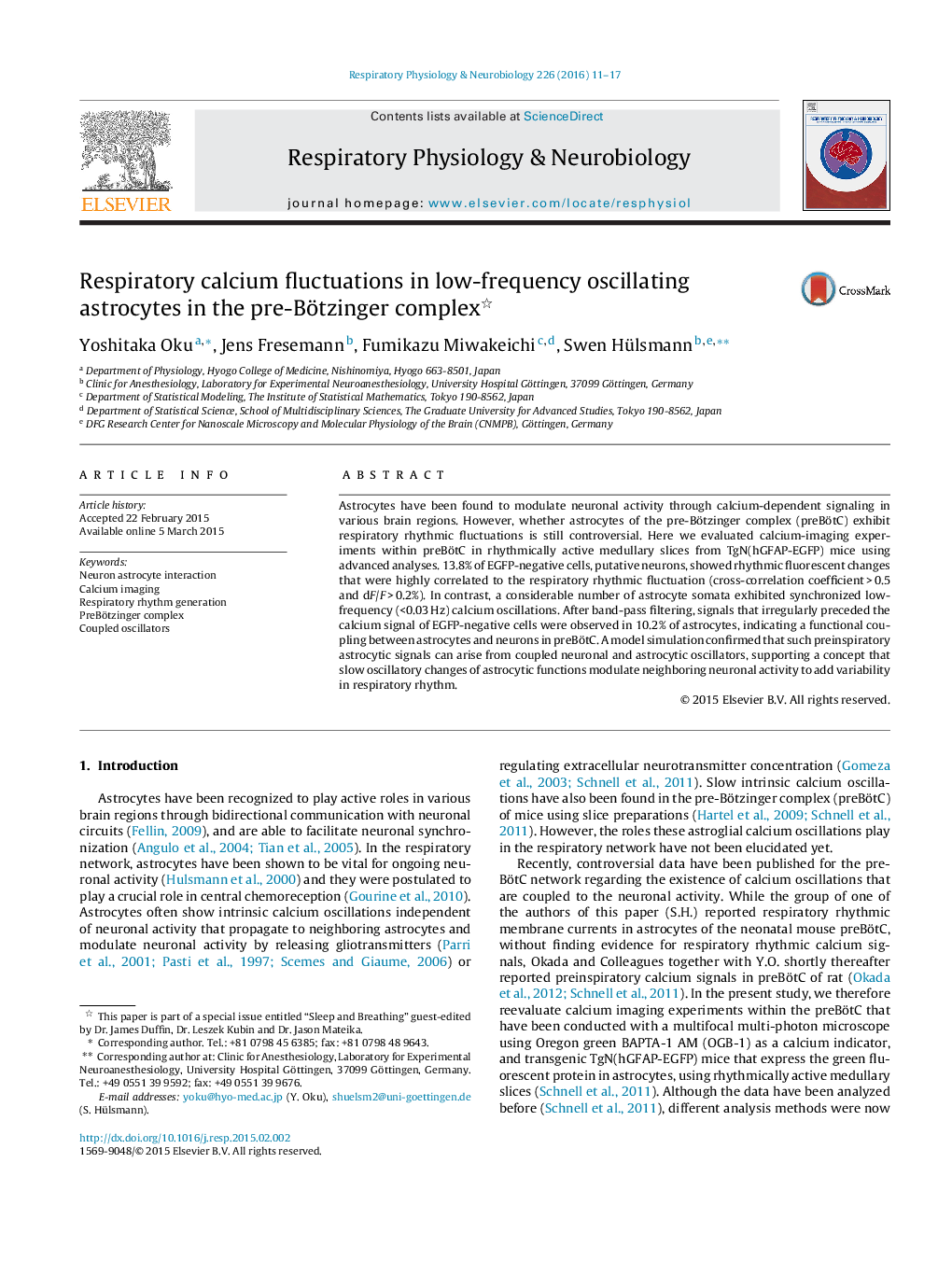| Article ID | Journal | Published Year | Pages | File Type |
|---|---|---|---|---|
| 2846709 | Respiratory Physiology & Neurobiology | 2016 | 7 Pages |
•Pre-Bötzinger astrocytes exhibit synchronized low-frequency calcium oscillations.•Calcium signals in 10% of astrocytes precede inspiratory neuronal activity.•Astrocytic signals may contribute to variability of the respiratory rhythm.
Astrocytes have been found to modulate neuronal activity through calcium-dependent signaling in various brain regions. However, whether astrocytes of the pre-Bötzinger complex (preBötC) exhibit respiratory rhythmic fluctuations is still controversial. Here we evaluated calcium-imaging experiments within preBötC in rhythmically active medullary slices from TgN(hGFAP-EGFP) mice using advanced analyses. 13.8% of EGFP-negative cells, putative neurons, showed rhythmic fluorescent changes that were highly correlated to the respiratory rhythmic fluctuation (cross-correlation coefficient > 0.5 and dF/F > 0.2%). In contrast, a considerable number of astrocyte somata exhibited synchronized low-frequency (<0.03 Hz) calcium oscillations. After band-pass filtering, signals that irregularly preceded the calcium signal of EGFP-negative cells were observed in 10.2% of astrocytes, indicating a functional coupling between astrocytes and neurons in preBötC. A model simulation confirmed that such preinspiratory astrocytic signals can arise from coupled neuronal and astrocytic oscillators, supporting a concept that slow oscillatory changes of astrocytic functions modulate neighboring neuronal activity to add variability in respiratory rhythm.
